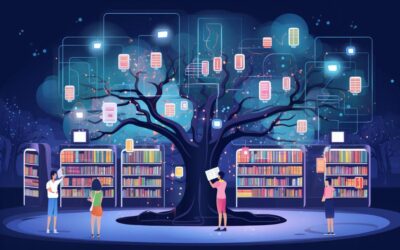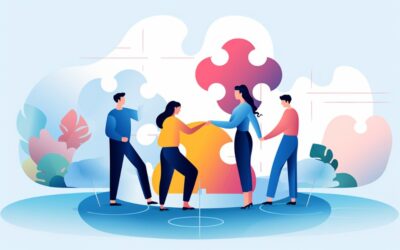Work hard, play harder!
With such staggering worker dissatisfaction and disengagement, we can’t help but wonder–what if we could harness that zen-like focus that people get when they are fully engrossed in a video game for twelve hours straight onto their real-life work instead?
This blog covers what workplace Gamification is all about, why you need it, and tips to implement it correctly to get the most out of it.
What is Workplace Gamification?
First, let’s start with a broad definition of gamification!
Gamification is applying game elements to non-gaming activities in the real world. In other words, it is the application of fun and addicting game elements to almost anything and everything.
Workplace gamification is the process by which game dynamics and mechanics are applied to a professional environment and its systems to better engage and motivate employees to achieve the desired goals.
Gamification, as understood by most, is just a technology that involves a bunch of rewards, badges, etc., but it is beyond that. It is a psychology that motivates users toward intended behavioral outcomes, learning, and problem-solving.
Gamification does not have to stop at the training level. It can accelerate learning, encourage people to adopt different activities and applications, promote social connections, make technology fun and interesting, show a path to mastery & independence, and, most importantly, increase employee engagement.
According to a survey conducted by TalentLMS, 89% of people claimed that if a task is gamified, they are eager to complete it and that the activity places them in a competitive mood and mindset.
Why do you need Workplace Gamification?
Why do you need to gamify your professional environment? As mentioned earlier, it is not just a technology but psychology that taps into human emotions to improve behaviors and accomplish boring and mundane tasks by making them fun and interactive.
Tap into Intrinsic Motivators
Intrinsic motivation is performing an action because it is fun or challenging without any obvious external rewards. You do it because you want to and if you enjoy doing it without expecting anything in return.
And we humans share the primary intrinsic motivators and tend not to leave tasks unfinished. These motivators are the factors that drive us to take action and complete a task to achieve the “intrinsic” feeling of completion, which is highly motivating.
The five common motivators are autonomy (the power of control), mastery, social interaction, progress, and achievement.
According to behavioral research, satisfying these intrinsic motivators can significantly increase work productivity. And gamification can use these motivators to help employees unlock their potential. You can apply it across different job titles and departments.
Make Data-Driven Decisions
Workplace gamification is also the best way to capture relevant data to show and track your employee performance.
Data provided, such as login data, completion rates, points & badges achieved, can encourage and appreciate your employees’ success.
Every workplace will look different in terms of what its data looks like and what data points it would like to focus on. Your business needs to know which numbers to track and monitor.
Increase Employee Output
Gamification aims to educate employees and can be implemented across almost every industry. From marketing to sales and employee training and processes, gamification can help drive your company forward, as well as help make your workplace highly interactive for the employees.
Gamification can be used to:
- Improve employee loyalty and increase revenue
- Drive-up employee knowledge with gamified training
- Increase feature adoption
- Boost engagement and retention rates
Workplace gamification can be a positive force that can help improve employee engagement across all departments. It can bring all age groups together and make the workplace fun and productive.
Best Practices for Gamifying the Workplace
It is very easy for a business to get blown away by all the features and avenues that gamification opens up for a workplace. Gamification has the potential to be an integral part of the daily work and operations in any organization.
The key is not to implement everything without having a well-thought plan. The gamification strategy should be well-designed and implemented properly in a phased manner.
Keep these best practices in mind to have the right gamification strategy for your workplace and reduce the risk of failure.
1. Use the Correct form of Motivation
People want to progress and evolve for the better. If allowed to see their progress through badges, employees will have a clearer picture of their achievements.
Care should be taken only to monitor the employees’ success and not to control it.
Constantly ‘watched’ employees might be uninterested in participating in the gamification program. Employees are of two different types: collaborators and competitors.
Competitive employees prefer rankings and competition, whereas cooperative employees prefer to gain higher social status and be more talented. It is important to understand intrinsic and extrinsic motivation before designing the gamification strategy for different kinds of employees.
2. Don’t use Money as a Motivation
Rewarding employees with money is a bad idea because extrinsic rewards rarely work in the corporate space. When rewarded with money, employees lose focus on other things that should motivate them, like the sense of team unity and pride in doing their job.
Money kills creativity and also fosters unhealthy rivalries among employees.
Employees should be encouraged to perform well using intrinsic motivators and intrinsically valued rewards. These could be their ability to achieve goals, demonstrate valuable skills, and think outside the box for a solution.
3. Develop a Professional Game
Gamification’s roots in game design technology don’t imply that your workplace application should have a game in it. The basic principles of gamification, namely measurement of behavior, goals, and visible rewards (badges, etc.), should be designed and adapted keeping the target audience in mind.
The theme and design should match the corporate style and standards. Communicate the rewards to your employees clearly. For instance, if an employee has been pivotal to the company meeting its goals or performing well, they should earn a badge. Employees could then share these badges on your enterprise social network.
4. Plan the Gamification Design before its Application
The strategy must be well-thought, well-designed, and structured. Take care of these points during the planning process.
- Keep in mind your corporate culture.
Create a reward program that binds your employees to your corporate culture. Think hard about what rewards will ensure greater motivation.
- Don’t lose sight of your organization’s goals.
This is the most important yet overlooked step during the planning phase. Set your objectives in the initial planning phase to avoid losing sight of what’s important during execution.
- Focus on positive behavior to encourage and negative behavior to discourage
Identify the activities and triggers that influence the behavior you want to change.
- Focus on improving people rather than just improving their productivity
- Periodically modify the bonus reward system to ensure employees don’t get bored with the same incentives and remain engaged with the system.
5. Encourage team building with easy collaboration
Gamification doesn’t always have to be about games, badges or rewards. Initiatives such as intra and inter-team collaborations to get two teams or individuals to work together create a positive impact on the employees. It also boosts networking and visibility and fosters a team-building culture.
*
* *
Stakeholder disengagement is a major reason for productivity loss across functions & industries. These days, all “Top 10 technologies to look for this year” invariably mention Gamification!
No wonder enterprises are willing to know more about Gamification, the technology that has been a secret weapon for building user engagement.
When implemented, it also improves social sharing and collaboration and leads to high-value interactions with customers, employees, and partners.
![]()
Architaa Pandey
Architaa works as a Content writer and strategist at Upshot.ai. When not working, she loves to write fictional stories and dreams of getting them published. Being an avid reader, she loves collecting books. She also likes to research Customer engagement and retention strategies for different industries.



